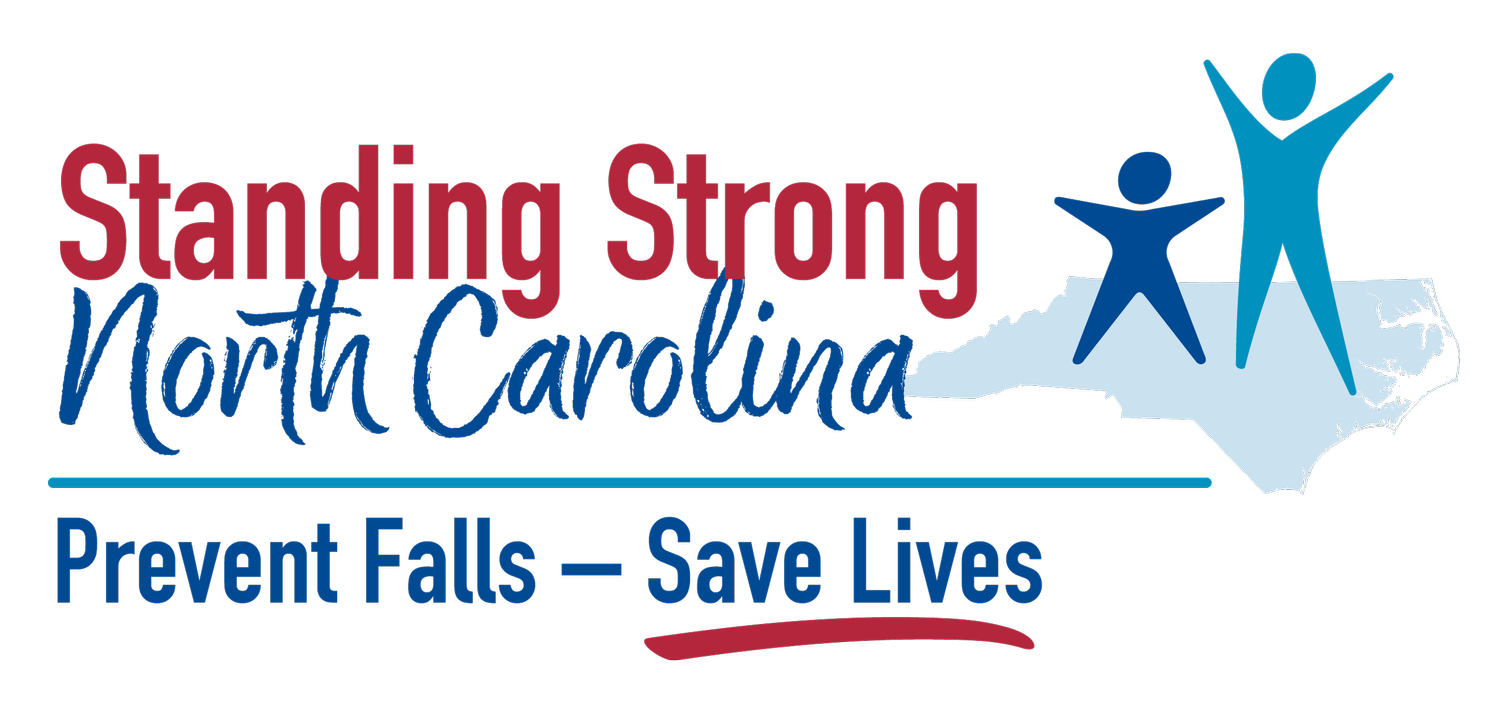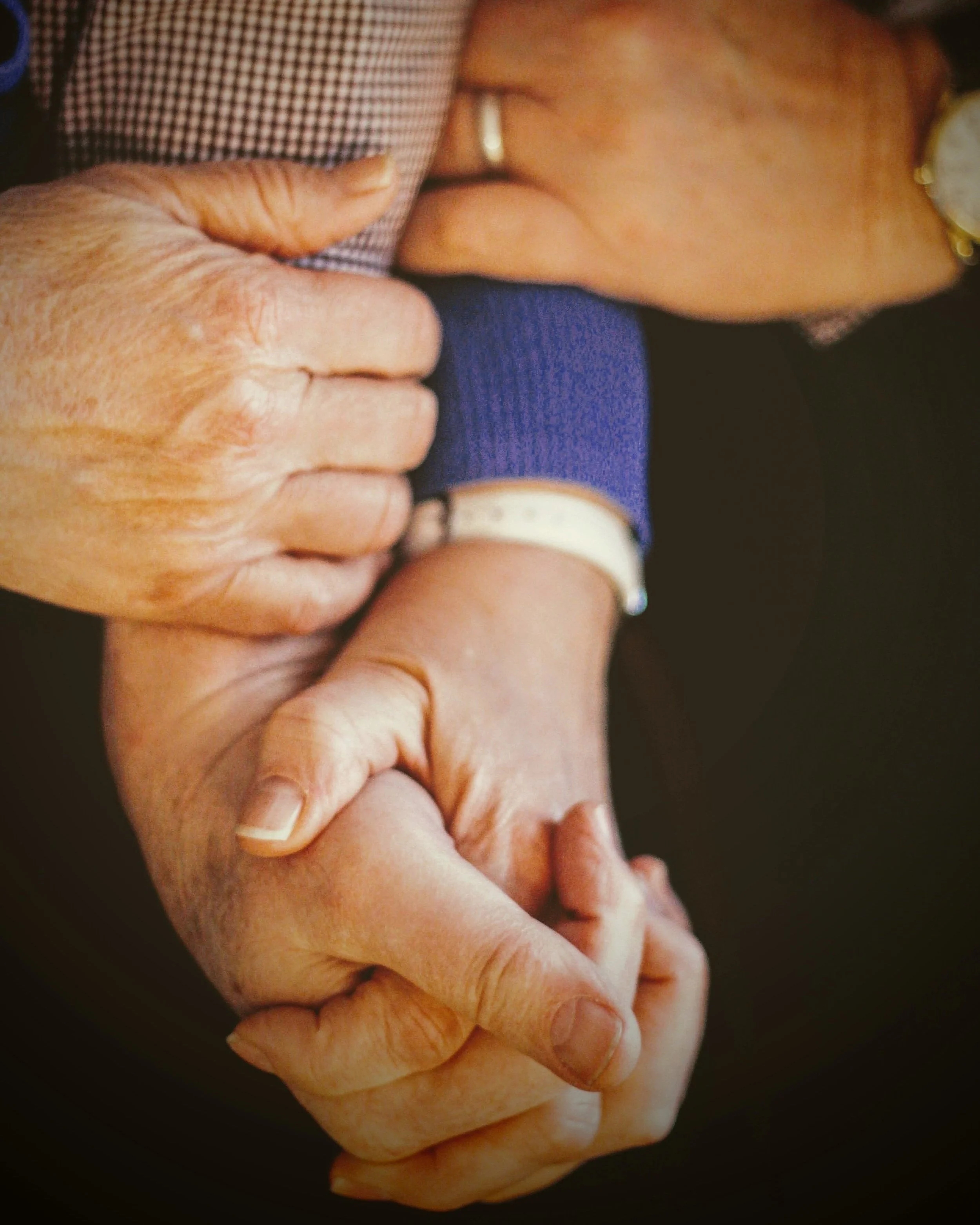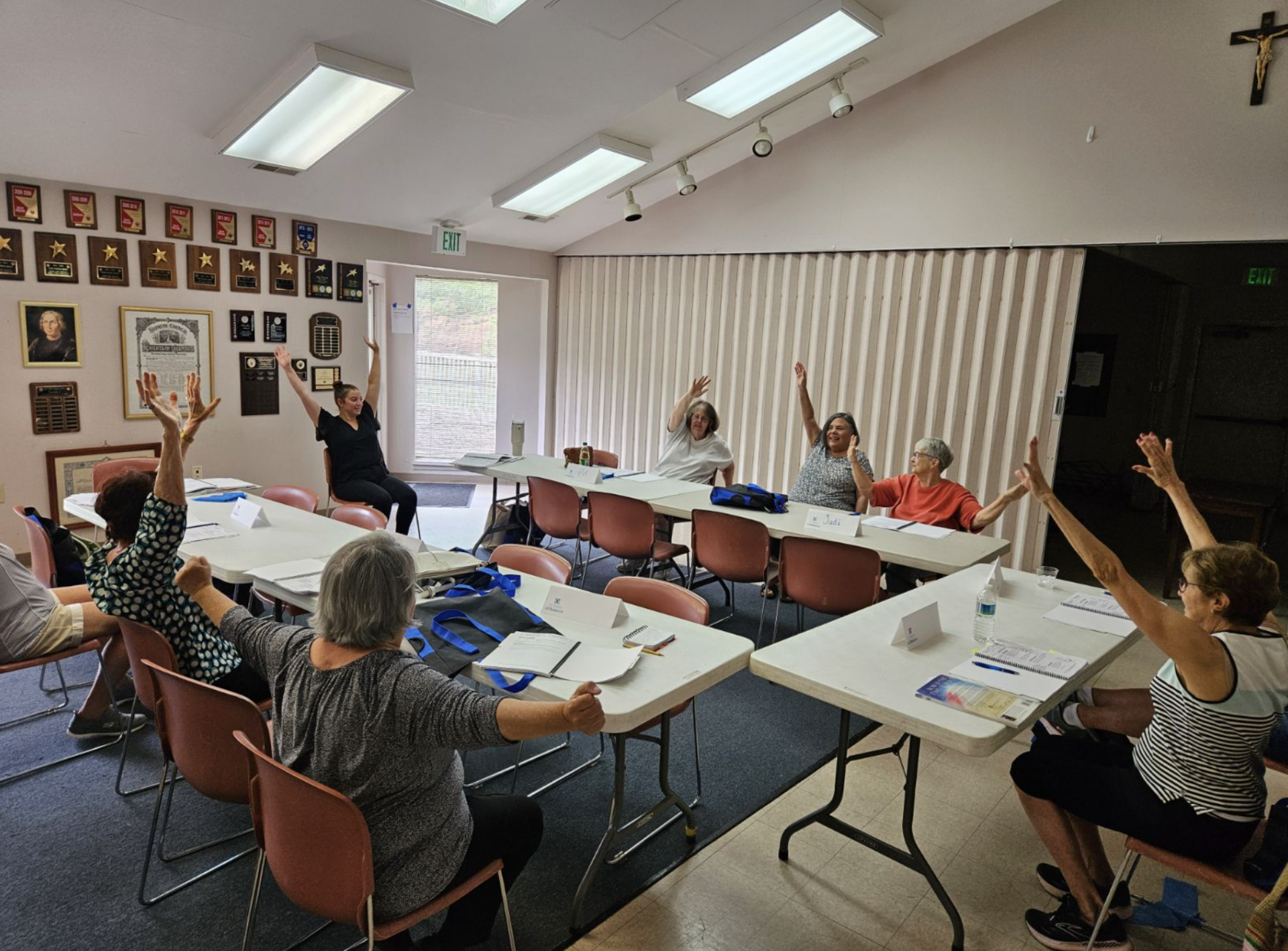Mind and Movement: The Link Between Mental Health & Fall Prevention - Always, and Especially, Post-Helene
We had planned to publish this blog in October, for the World Health Organization designated World Mental Health Day on October 10th. Well, guess what? We didn’t get this posted during Hurricane Helene in Western North Carolina and her aftermath. So, we have decided to tailor this original topic to help those of us across the state, and especially, in Western NC.
This connection between Mental Health and Falls Prevention is always present, and especially so post-Helene, as there are many other factors, such as loss, grief, and disrupted routines. The needs of older adults and all of us are amplified post-disaster. People may feel even more isolated due to physical changes in their homes, neighborhoods and/or region, they may be displaced, temporarily living in a different place with or without family and friends nearby, or it may be that the disruption of their daily routine creates a feeling of loss. Many people are also grieving the actual loss of life of friends and family, or the loss of a home or business. We live here. We see you. We are with you, and we have resources to share in this blog.
A 2021 study found that nearly a quarter of adults over 60 experience social isolation, leading to higher rates of depression and anxiety.
Loneliness can cause many health problems, making people less active, increasing the risk of heart disease, raising blood sugar levels, worsening sleep quality, and making daily tasks harder. It is also linked to memory issues, Alzheimer's disease, and a higher risk in older adults of dying earlier. These effects persist even when accounting for other factors like depression.
What is the difference between loneliness and social isolation?
While loneliness and social isolation are related, they are not the same. Loneliness is the distressing feeling of being alone or separated from others. Social isolation is the lack of social contacts and having few people to regularly interact with. It's possible to live alone and not feel lonely or socially isolated, just as it's possible to feel lonely even when surrounded by others.
Older adults face a higher risk of social isolation and loneliness due to changes in health and social connections that often come with aging. Factors such as hearing, vision, and memory loss, disability, mobility issues, and the loss of family and friends can all contribute to these feelings. If older adults have been relocated due to Hurricane Helene, this can further impact their social connections.
Recognizing the Need for Connection
Many adults find ourselves lacking connection as we age, even if we preferred being “homebodies” when we were younger. While enjoying alone time at home once felt like a privilege, too much of it can now be harmful. For introverted individuals, recognizing loneliness or social isolation can be challenging. Several risk factors can contribute to social isolation and loneliness, including:
Major life changes, such as the death of a family member or retirement, or impacts of a natural disaster
Separation from friends or family
Lack of social support
Caring for a loved one who is unwell
Living in a rural, unsafe, or hard-to-reach neighborhood
Experiencing discrimination based on age, race, ethnicity, sexual orientation, or gender identity
Language barriers
Individuals with mobility impairments or hearing loss are particularly vulnerable to social isolation. Those with hearing loss may find it difficult to engage in conversations with friends or family members, increasing their sense of isolation. Difficulties communicating with others can lead to less interaction with people, social isolation, and higher rates of loneliness.
To help address these challenges, Social Bridging NC created a social isolation self-assessment to help you see whether you are at risk of being isolated.
Recognizing that you may be socially isolated is the first step to creating connection and community with others. Keep reading for ways to combat loneliness and social isolation.
What You Need to Know About Depression and Falls in Older Adults
How Mental Health and Falls Are Connected
As we get older, we often start worrying more about falling. This worry comes from the possibility of getting hurt, which can make it hard to move around, do everyday tasks, or live independently. Many older adults are afraid of falling, even if they haven’t fallen themselves. It’s not surprising that 30 - 50% of older adults fear falling more than other issues like money problems, missing appointments, or being scammed. Many of us know someone who had a bad fall or have heard stories about serious injuries, like broken hips, that never fully healed. In fact, an older adult is taken to the emergency room for a fall every 11 seconds. A study found that adults 65 and older who are prescribed antidepressants can be at a higher risk of falls. Older adults with higher depression scores had a 1.17 times higher risk for repeated falls, and those taking antidepressants were 5.40 times more likely to experience repeated falls. If an older adult is living in a different environment following a natural disaster or some other major life change, being aware that this is a big change that could increase their risk of a fall could be helpful. Noticing what’s different in our living space, and taking our time moving around, especially if we are feeling confused or sad, are two recommendations for managing this type of change. (If you know or care for someone who has relocated, consider sharing this information with them.) Here is an inspiring story of how one community is checking on each other and how beneficial intergenerational connections can be! Check on your neighbors all the time, not just during disasters.
Mental Health and Fall Prevention
It is totally normal to have a fear of falling; most of us do. It is a naturally occurring fear aimed at keeping us safe. However, as we age this fear can increase fall risk and severely impact our lives. This fear and anxiety of falling can keep us from doing the things we enjoy in life, both before and after a fall, leading to inactivity or reduced social engagements. By limiting activity levels, we actually increase our risk of falls. When we are less active, we become weaker, which increases our chances of falling. Plus, the fear of falling and a general loss of confidence can contribute to depression, isolation, and feelings of helplessness. We can become even weaker, which further increases our chance of falling. It’s a vicious cycle.
Combating Mental Health with Exercise
Studies have shown that exercise should be considered as the first line of treatment of mild depression in adults 65+. Engaging in mild exercise on a regular basis is a critical part of fall prevention. Movement like Tai Chi can improve our strength and balance and make our muscles and joints stronger! Other programs such as A Matter of Balance take more of a cognitive-behavioral approach. These programs work to reduce the fear of falling by improving our self-efficacy and sense of control over falling, and help us to problem solve with others.
There are evidence-based programs available throughout North Carolina that are specifically designed to improve balance and stability. A by-product of these programs is their mental health benefit and the community that builds around these programs.
A Matter of Balance: Managing Concerns about Falls
A Matter of Balance (MOB) program is proven to reduce the fear of falling and enhance activity levels among older adults living independently. Participants build confidence and reduce fall risks through open discussions, lifestyle adjustments, and gentle exercises.
What to Expect:
The MOB program consists of eight sessions, each lasting about two hours.
Participants engage in constructive dialogues.
They learn valuable strategies for modifying their daily routines.
Tailored exercises designed to enhance balance and stability are practiced throughout the sessions.
Tai Chi for Arthritis & Fall Prevention (TCAFP)
Tai Chi for Arthritis and Fall Prevention (TCAFP)
One of the most popular programs across North Carolina. Tai Chi for Arthritis and Fall Prevention utilizes mindful movements to improve relaxation, balance and strength, and proprioception (your body’s ability to sense movement, action, and location.)
What to Expect:
TCAFP meets for 1 hour per session, typically spanning 16 sessions, which may occur once or twice weekly.
No prior Tai Chi experience is necessary to join the program.
Participants will be guided by a trained instructor to engage in gentle flowing movements designed to enhance balance and reduce the risk of falls.
Find a Class - Find a Community
The programs mentioned above and others are often at no cost and are provided in person and virtually. These programs are offered through a partnership between Healthy Aging NC, Standing Strong NC, NC Fall Prevention Coalition, NC’s Area Agencies on Aging and Senior Centers across NC. Find a class near you today and create community- just like these folks in Mecklenberg County below!
“A Matter of Balance makes a difference in our community and creates collaboration across agencies. This class was taught by Atrium Health and Age Friendly Mecklenburg and hosted by Catholic Services.”
A group of participants engage in A Matter of Balance program in Mecklenburg County.
Photo courtesy Metrolina Falls Prevention Coalition
In closing, just remember that we may all experience social isolation and loneliness at times, and that these can be amplified by a major life change, such as a natural disaster or other major loss. In all times, and especially now, check on your neighbors, take your time moving around your environment, especially if you are in a new environment, make sure that you have updated medications with you, and stay connected either through a falls prevention group program or other community group that you enjoy.
More Resources
National Council on Aging - Falls Free Check-Up
By Amber Chapman, Louise Noble and Ellen Bailey, NC Center for Health and Wellness




